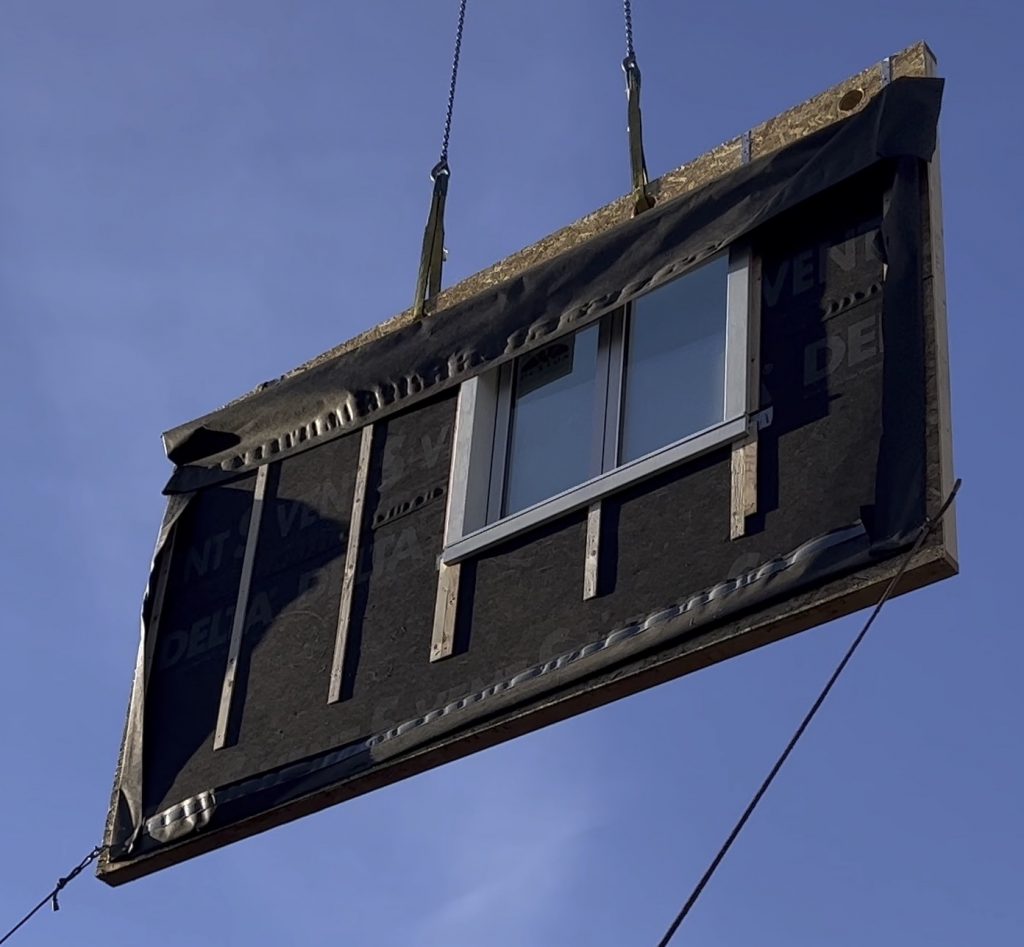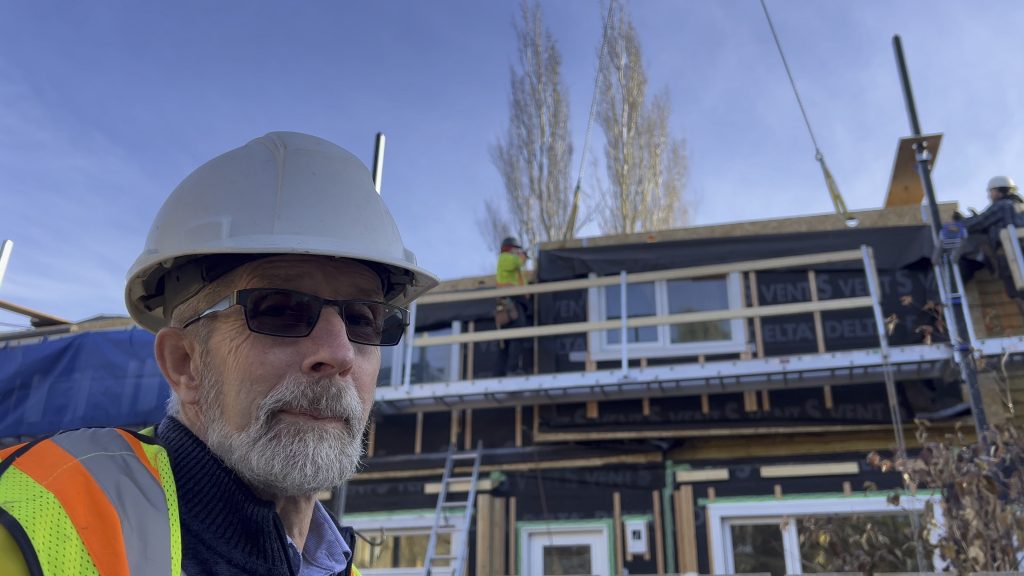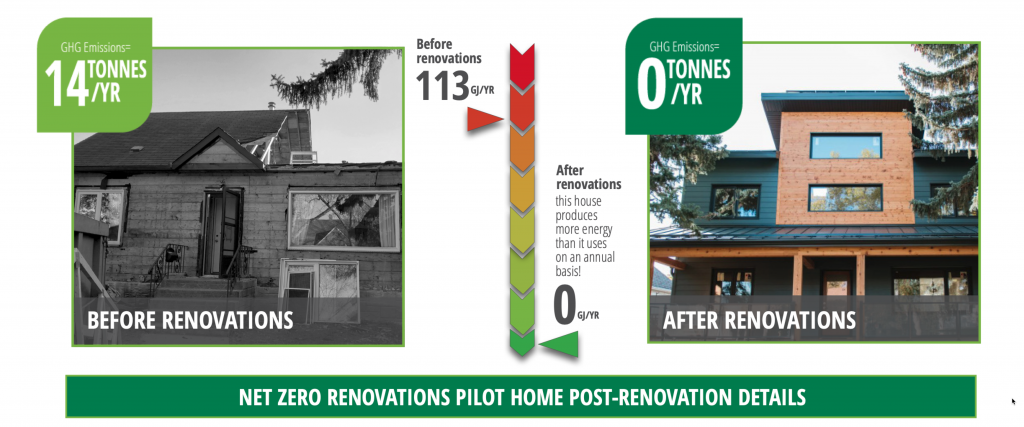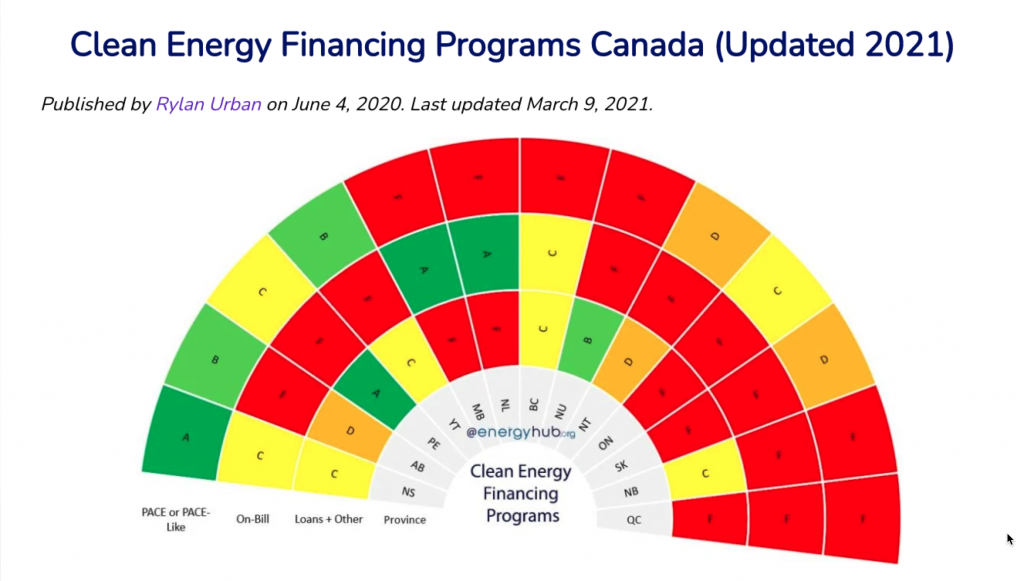By David Dodge, GreenEnergyFutures.ca
Building new net-zero homes is great for homeowners, makes economic sense over the life of the home and is great for helping reduce the impacts of climate change.
But what to do with the 80 per cent of buildings already built – inefficiently?
The Netherlands has embraced this massive challenge and has a goal of retrofitting every building in the country to net-zero by 2050.
So far, their pilot program commits to renovating 110,000 homes, with more than 10,000 homes already completed.
This monumental effort requires a whole new approach. The Dutch call it EnergieSprong, which translated simply means “Energy Leap.”
Edmonton net-zero builder Peter Amerongen visited the Netherlands and was so taken with this idea he is doing the first large-scale EnergieSprong inspired project in Canada.
Green Energy Futures CKUA Radio Podcasts
EnergieSprong – Retrofits on steroids
We met up with Peter at the Sundance Housing Cooperative in Edmonton, Alberta. He’s midway through a project that is doing deep energy retrofits to 59 townhome units that were built in the 1970s.
The goal? Retrofit all 59 homes to net-zero using the streamlined, industrialized EnergieSprong process.
In the Netherlands “they have hundreds of thousands of post-war townhouses that were built with very little insulation,” says Amerongen. They digitally scan the buildings using LIDAR (an acronym: Light Detection and Ranging) photogrammetry.
The scans are used to make computer-designed panels in a factory. The wall panels come with windows, insulation, and siding already in place. Then a crane lowers the walls and new roof onto the old home and presto the building is wrapped in a super-efficient parka.
“In a matter of a month or so they can take a group of townhomes and make them net-zero.”
At the Sundance Housing Cooperative in Edmonton, the homes are 4-unit townhomes built in the 1970s. They were built above code at the time, but like all buildings of the era, they were pretty leaky, allowing about four to five air exchanges per hour.
Builders now know air sealing is crucial. After Peter is done these units feature only about 0.6 air changes per hour.

Retrofitting 59 homes to net-zero in Canada
“We started by having a hydro-vac truck make a six-inch-wide slot all the way down to the footing.” Then Peter dropped about five inches of low carbon, graphite-infused Styrofoam insulation down the hole and snuggled it up against the foundation. This means the foundation walls are now protected with a layer of R25 insulation.
The new panelized walls create an eight-inch gap between the old siding and the outside of the new wall. This is jam-packed with cellulose insulation boosting the wall from its original R15 to R42 insulation, which is almost three times better.
This is sealed with a membrane. And, as predicted, they have brought the air exchanges down to 0.6 per hour, “pretty close to the passive house standard.”
Just like the new net-zero homes, Peter has built, the old windows are replaced with R8 triple-paned windows.
These retrofitted homes now require 70 per cent less heat, enabling them to replace the gas furnaces with air source heat pumps that run on electricity.
“These are pretty amazing,” says Peter. “They are very efficient over the heating season and they also produce very efficient cooling in the summer when it’s super-hot, as it seems to be getting these days.”

Climate resilient too
Indeed, temperatures reached near 40 degrees Celsius in Edmonton last summer in the most northerly city in the western hemisphere. With a simple reversing valve, the heat pumps become 300-400 per cent more efficient air conditioners.
“When we had that horrible heat wave, folks were so comfortable and not using all that much energy,” says Peter.
The homes have no gas hook-up and receive no gas bills. Solar is added to the roof which will provide about 75% of the total energy required to heat, cool, and power the homes.
The other 25% will come from purchased renewable energy such as wind and solar.
It costs more than $100,000 to transform an old home to net-zero. But Peter says it makes economic sense based on four things; 1. Energy savings, 2. Fixing the maintenance backlog, 3. Improved comfort and resale value, and 4. The availability of incentives.
The business case improves dramatically in buildings that have a backlog of maintenance. Instead of simply replacing old siding and windows, for example, you add lots of insulation, improve air sealing and add super-efficient windows as well. Each of these measures will provide energy savings.

The climate change elephant in the room
Building new buildings to a net-zero standard already makes sense, but the big emissions prize is in the 80 per cent of buildings already built that will still be here in 2050 when the goal is to reach net-zero emissions.
“We’re at the very beginning” Peter asserts. “We have about 14 million dwellings in Canada and 8 million of those are single-family houses. We need to renovate about one every two seconds to be done by 2030. So, we’ve got a long way to go.”
It’s hard to imagine significant numbers of homeowners borrowing $100,000 for such a long-term return on investment. So, what to do?
In the Netherlands where electricity prices averaged 0:18 cents (Cdn) per kWh in 2021 the economics are solid – the energy savings pay for the renovations.
Many believe it will take a coordinated, systematic, national program to help Canadians get on board. This will require massive amounts of private capital and custom financing programs, such as Property Assessed Clean Energy (PACE) financing.

Climate friendly financing is key
The idea is to tie the scale of financing payments to savings, which requires very little out-of-pocket cash. Financing is tied to the property, not the owner.
Alberta passed enabling legislation a number of years ago and the towns of Rocky Mountain House and Devon have already started PACE-like programs called Clean Energy Improvement Program (CEIP). The City of Edmonton is rumoured to be launching its own program in 2022.
According to energyhub.org there are 34 clean energy financing programs in Canada but most programs are small and disparate. These programs are more like pilot programs for the sophisticated, national effort that is required to tackle a significant number of buildings.
Peter is not daunted by the enormity of the challenge. He says they’ve learned a great deal by piloting the EnergieSprong approach on 59 homes in Edmonton. It may be expensive, but “there’s only one way we’re going to drive the cost down and that’s by doing it over and over.”
Indeed, the best business case right now is to take a very poorly maintained home with good bones and do a deep energy retrofit. The “energy upside is big.” Since these homes already require expensive maintenance, the cost of the energy improvements is incremental.
Sure, it’s a big challenge, but as Peter says “What’s the alternative?” We can say “sorry kids, we are just going to give up” or we can look at this as an incredible opportunity for a major economic initiative that provides significant benefits to residents and society.
“We’ve got to go for it,” says Peter.

